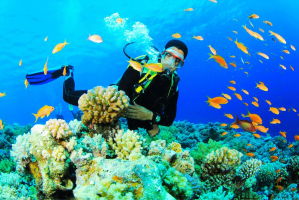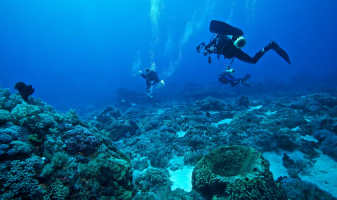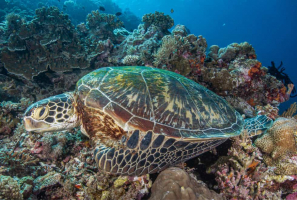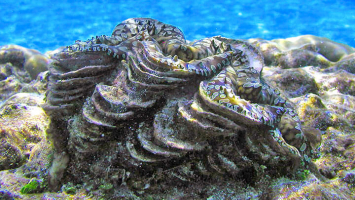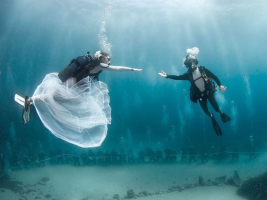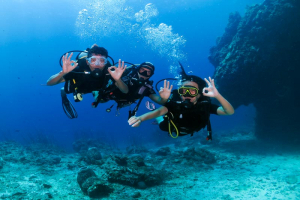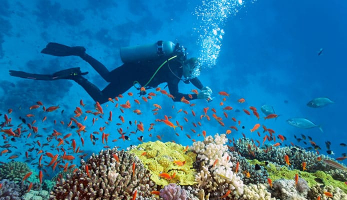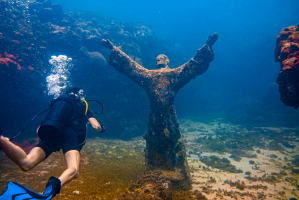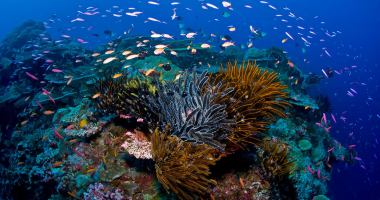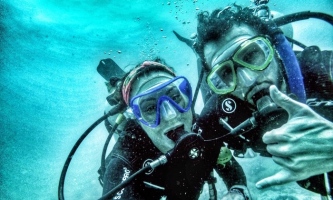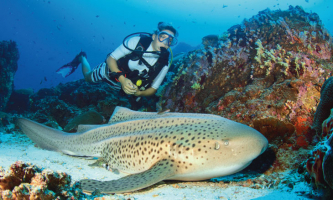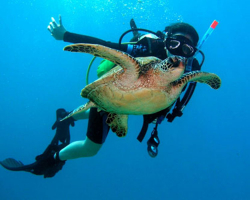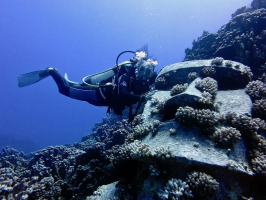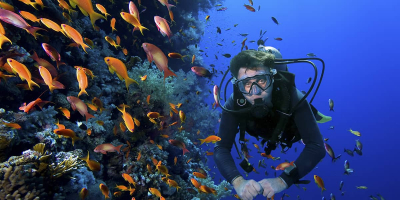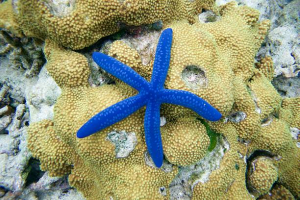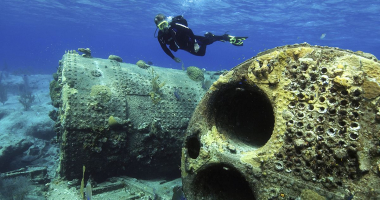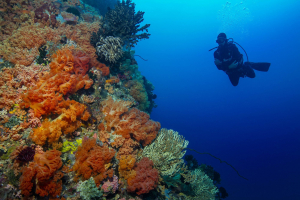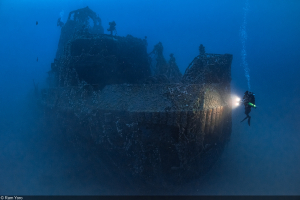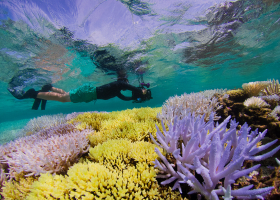Top 9 Best Dive Sites in Philippines
With over 7,000 islands and approximately 22,500 miles of coastline, the Philippines has nearly as many diving sites as former First Lady Imelda Marcos had ... read more...shoes! Divers are greeted underwater with a dizzying array of variation, both in terms of dive destinations and the amount of marine life. Divers that enjoy the strange and small should bring their macro lenses since diving in the Philippines is a slug lover's dream, with mantis shrimp, pygmy seahorses, and nudis galore. That's not to say the major stuff isn't present; it most surely is. The area is frequented by mantas, sharks, mola molas, rays, and pelagic hunters. There is some of best dive sites in Philippines
-
A UNESCO World Heritage Site with a reputation for marine life, Amos Rock should be on your diving bucket list. The only method to get to this Philippines diving spot is on a liveaboard, which is only permitted between March and June. This restricted access will undoubtedly make you feel like a VIP. Amos Rock is a treasure of the Tubbataha Reef, and it may be viewed at various depths with dives ranging from 6 to 70 meters (19-229 feet). Deeper currents should be avoided since they might be unpredictable. It is ranked at 1st dive site in the Philippines
Things to see: Amos Rock is home to around 600 different fish species, including sharks and rays. If you're lucky, you could even see whales and dolphins. Amos Rock's wall is not only home to several schools of reef fish, but it is also covered with a variety of beautiful corals, gorgonians, and purple sea fans.
When to go: From March through June is the optimum time to dive at Amos Rock. The usual air temperature is 27-30C/89-98F, while the water temperature is frequently 26-28C/85-92F.
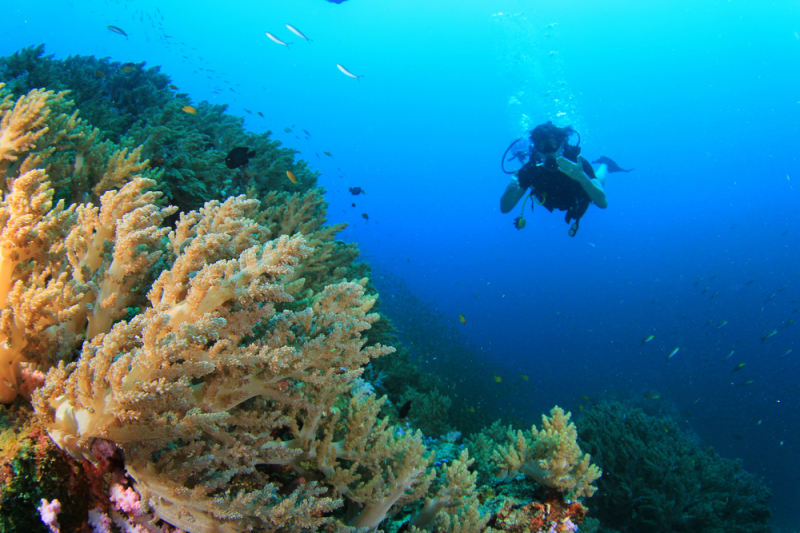
Source: divebooker.com 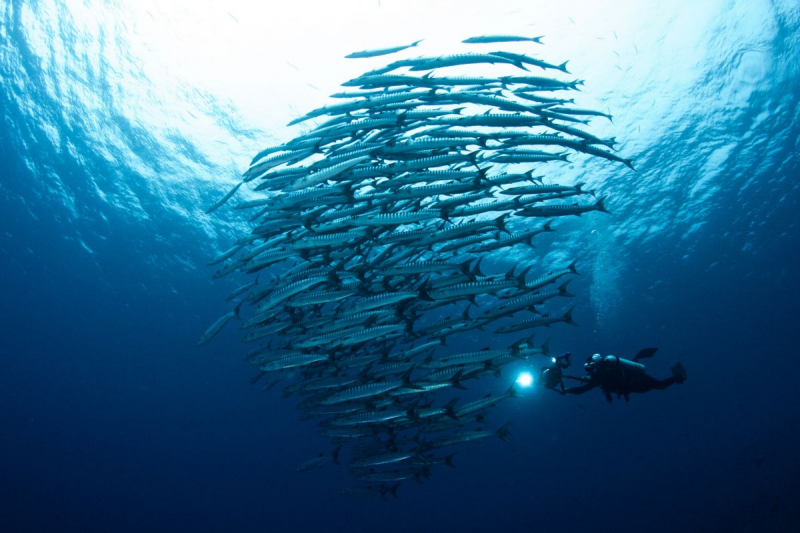
Source: buscabuceo.com -
Pescador Island is a marine sanctuary located just off the western coast of Cebu. The major draw is the enormous schools of fish that pass through the region, in which recreational divers may position themselves. Pescador Island is one of the world's top 50 diving destinations. The Cathedral, an open-topped underwater cave, is another feature of this Philippines diving destination. You'll begin your dive near the island's southern tip, commencing on a sandy slope and dropping to 10 meters (33 feet).
Things to see: Pescador Island is undoubtedly a visual treat, but you'll want to visit for the aquatic life. Larger pelagic predators are drawn to daily sardine runs, which involve tens of thousands of fish. There is also a 40-meter (131-foot) hard coral-encrusted wall.
When to go: Diving is offered all year. The average yearly temperature varies from 24 to 32 degrees Celsius/75 to 89 degrees Fahrenheit. The usual water temperature is roughly 27-30C/80-86F, and visibility is around 20m/65ft.
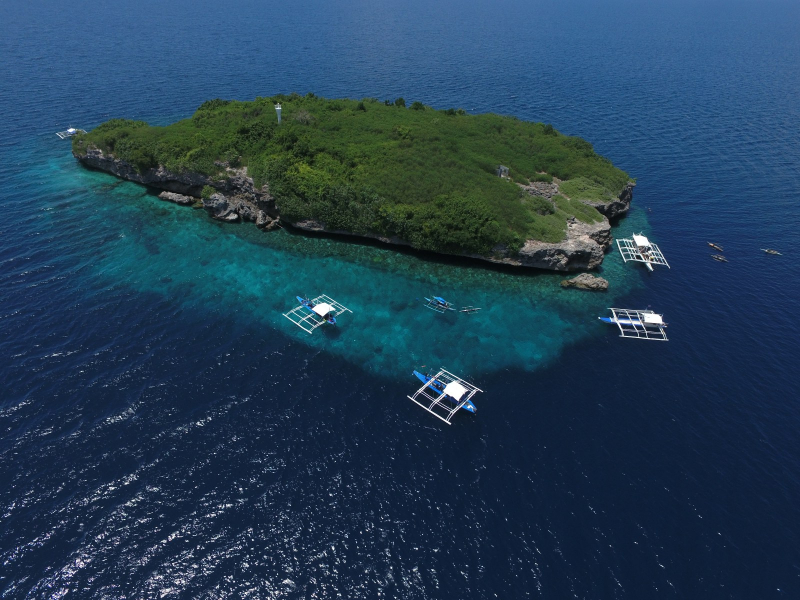
Source: neptunediving.com 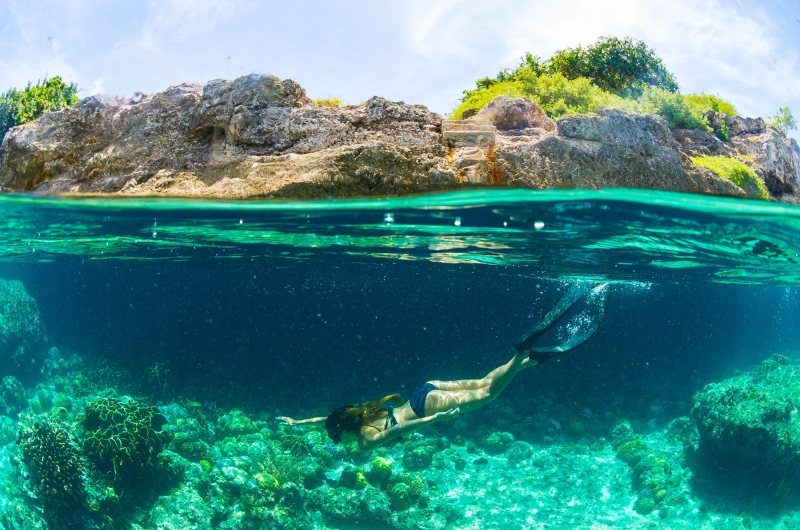
Source: guidetothephilippines.ph -
Look no further if you're looking for the greatest shark dive in the Philippines. Monad Shoal (one of the best dive sites in the Philippines) is an undersea island teeming with thresher sharks, and sightings are nearly certain (though some patients may be required). By far Malapascua's most popular dive spot, don't be shocked if it's highly filled by visitors. Although you may dive here all year, the greatest time to observe sharks is between March and May.
Things to see: Thresher sharks aren't the main draw for divers at this Philippines location, and there are plenty of marine species to keep you occupied, but if you want to increase your chances of seeing threshers, dive early in the morning. You have a better possibility of sighting devil rays and big manta rays in the afternoon. You may also come across octopuses if you're lucky.
When to go: The greatest time to dive is from March to May, however, diving is feasible all year. The typical air temperature ranges from 24 degrees Celsius (75 degrees Fahrenheit) to 32 degrees Celsius (89 degrees Fahrenheit). The water temperature ranges from 24°C/75°F to 30°C/86°F.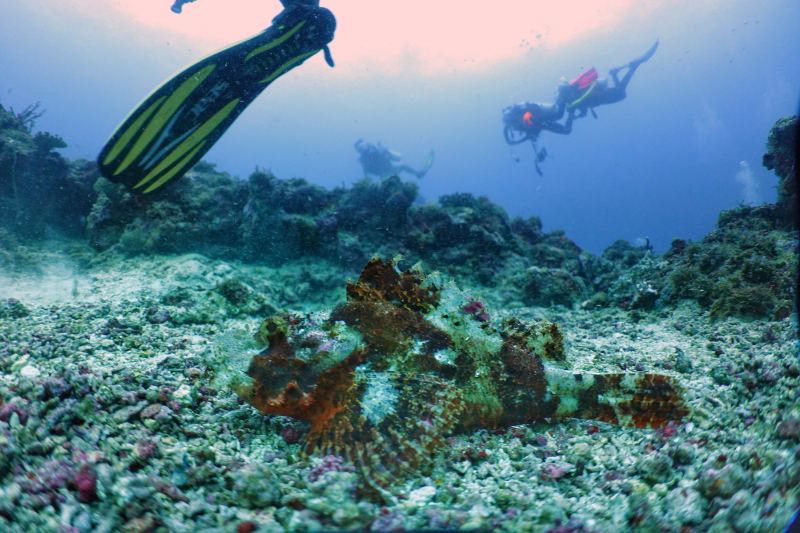
Source: deepblu.com 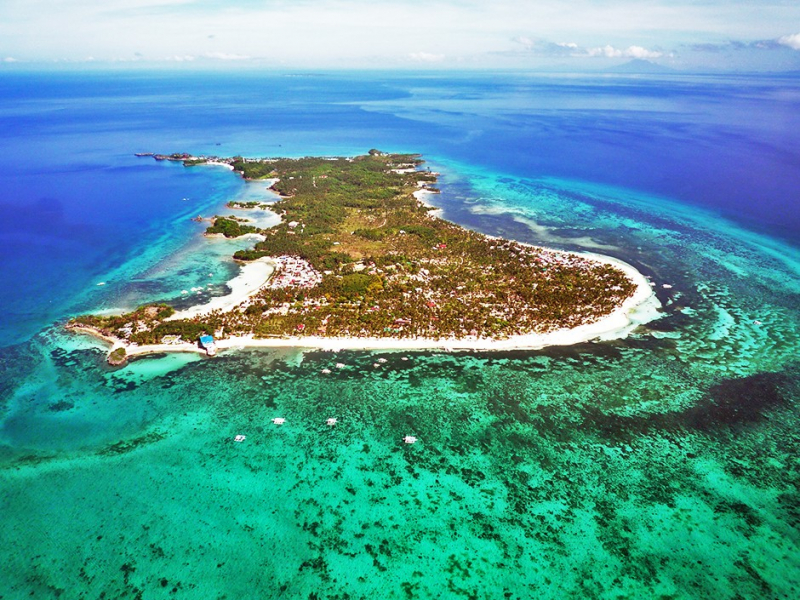
Source: buscabuceo.com -
Palawan is home to several shipwrecks, a tribute to World War II and the onslaught on the Japanese Navy. The Akitsushima Wreck, located in the world-renowned Coron Bay, is one of the most popular wreck diving locations in the Philippines. The Akitsushima, which went down in 1944, is stretched out, with considerable wreckage strewn distant from the ship yet visible throughout your dive. Keep in mind that much of the debris is judged too dangerous to enter, yet you may access the engine room if your training and divemaster permit. The optimum time to dive here is between January and June, and with depths ranging from 22 to 35 meters (72-118ft), this Philippines diving site is best reserved for expert divers with Nitrox certification.
Things to see: One of the ship's anti-aircraft cannons may still be seen. Though the debris itself is impressive, keep an eye out for the aquatic life that has taken it. The ship's hull is now covered in corals, gorgonians, and purple sea fans. You may also spot barracuda, yellowfin tuna, and groupers.
When to go: The greatest period to dive Akitsushima Wreck is from January to June, while other times may be doable. The air temperature is often between 27-30C/89-98F, while the water temperature is between 26-28C/85-92F.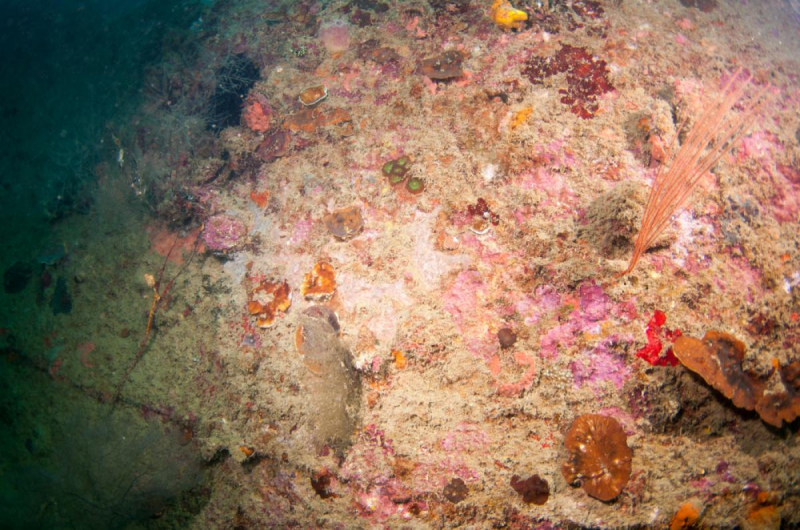
Source: divebooker.com 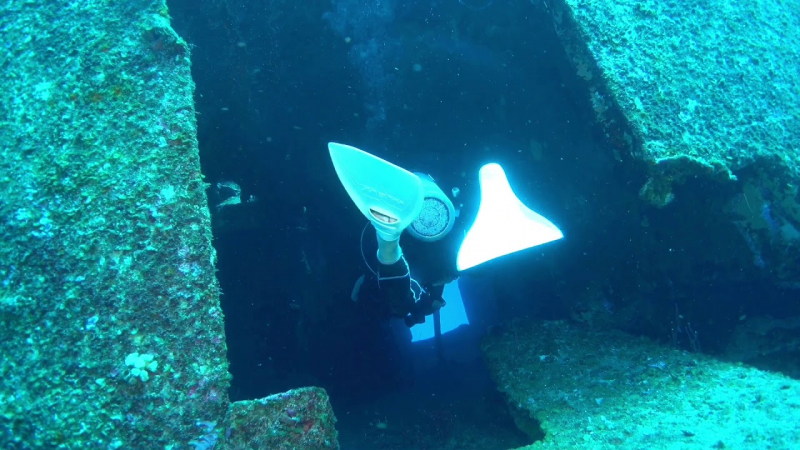
Source: youtube.com -
Puerto Galera is a diver's and a tourist's paradise. Its deep, clear waters are tempting, and this location is a visual feast both above and below the waves. Canyons are the major draw due to the abundance of marine life and the variety of diving situations. It's designed for adrenaline enthusiasts, with a quick 40-meter (131-foot) fall. Nitrox is strongly advised for Canyons, and only experienced divers should attempt to explore it because of the difficult circumstances.
Things to see: It's hard to mention all of the species you'll find here. Turtles, thresher sharks, barracuda, octopuses, and tuna, as well as big schools of reef fish, should be avoided. This location contains barrel sponges, gorgonian fans, soft pink corals, and whip corals. Therefore, it is one of the best dive sites in the Philippines.
When to go: Puerto Galera has a tropical environment and is open all year. The rainy season, which includes strong winds and typhoons, typically lasts from June until mid-December. The peak diving season lasts from mid-December to the end of May. Throughout the year, the average air temperature remains about 28°C/F. The water temperature ranges from 24 to 29 degrees Celsius/75 to 84 degrees Fahrenheit. The visibility in the water ranges from 10m/32ft to 30m/98ft and is at its best during the diving season. Most of the area dive sites have mild currents, while others have strong currents.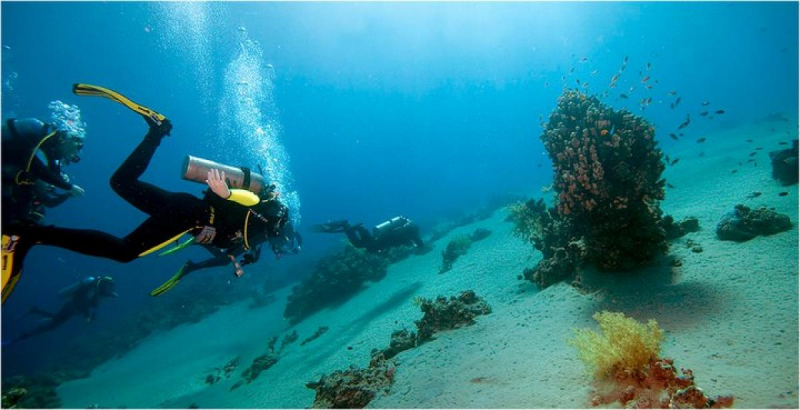
Source: divebooker.com 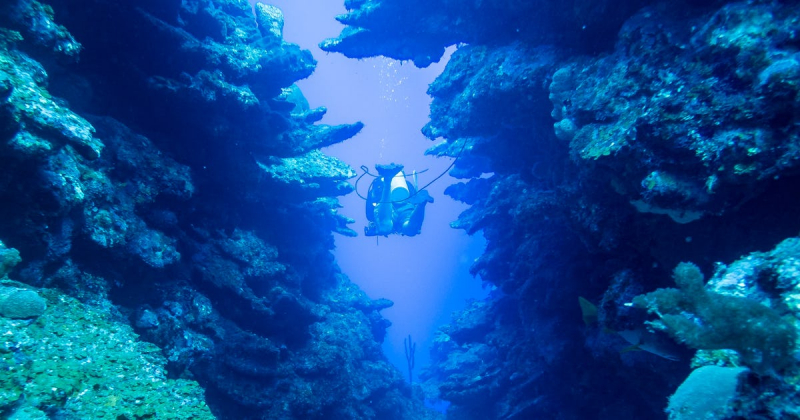
Source: theoutbound.com -
Manta Bowl is a seven-hectare underwater shoal named because of its shape and quantity of manta rays. Its powerful currents, which can be felt from all directions, attract manta rays, and the area acts as a feeding and cleaning station. The optimum time to dive at this Philippines location is between December and May, while manta rays may be seen all year. This location is ideal for anyone looking to escape the weather or make the most of their Christmas vacation.
Things to see: Because Manta Bowl has a sandy bottom, you won't see as many different types of life as you would at other dive locations. However, manta rays aren't the only attraction. There are barracuda, thresher sharks, hammerhead sharks, and snappers to be seen. Keep an eye out for feeding whales as well.
When to go: The months of December to May are said to be the best for diving at Manta Bowl Shoal. The air temperature swings between 27-30C/89-98F, while the water temperature stays mostly between 26-28C/85-92F.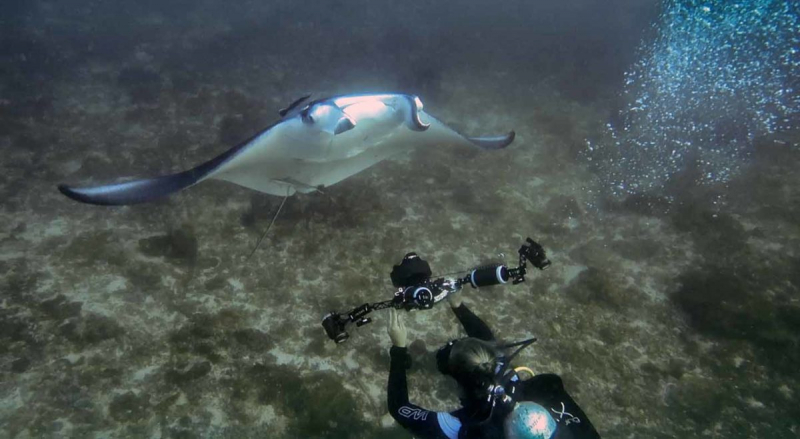
Source: owussaustralasia.org 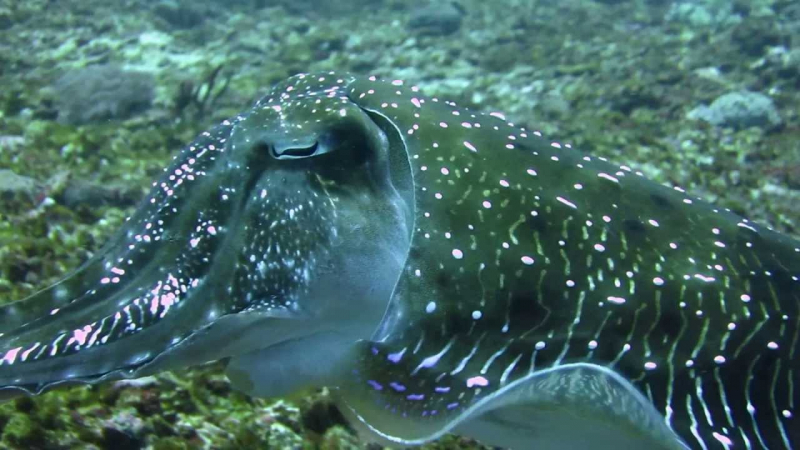
Source: youtube.com -
Manit Muck, also known as Secret Bay, is an excellent place for night diving and is appropriate for divers of all experience levels. This place has a diverse array of marine life, ensuring a one-of-a-kind experience. What you see is determined by the time of day you dive. Manit Muck is regarded as one of the top macro photography locations in the world, as well as a hidden gem for blackwater diving. It is two hours distant from Manila. This place deserves to be one of the best dive sites in the Philippines.
Things to see: Beautiful coral reefs and a wide array of marine life may be found on Manit Muck. To mention a few highlights, there are seahorses, frogfish, jellyfish, turtles, reef sharks, and vast schools of reef fish.
When to go: It is feasible to dive at this diving location all year since the sea temperature is relatively warm, ranging from 25-30C/77-86F.
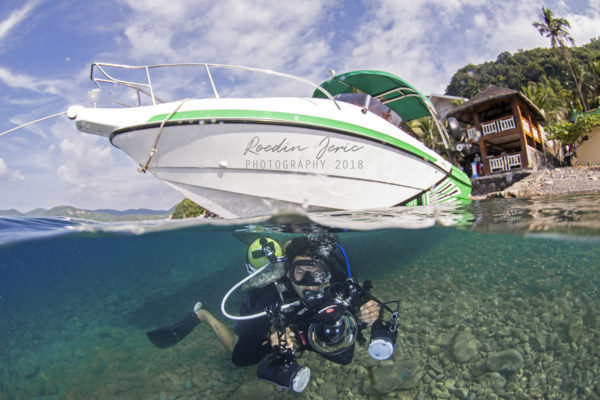
Source: travelexplore.cm.ph 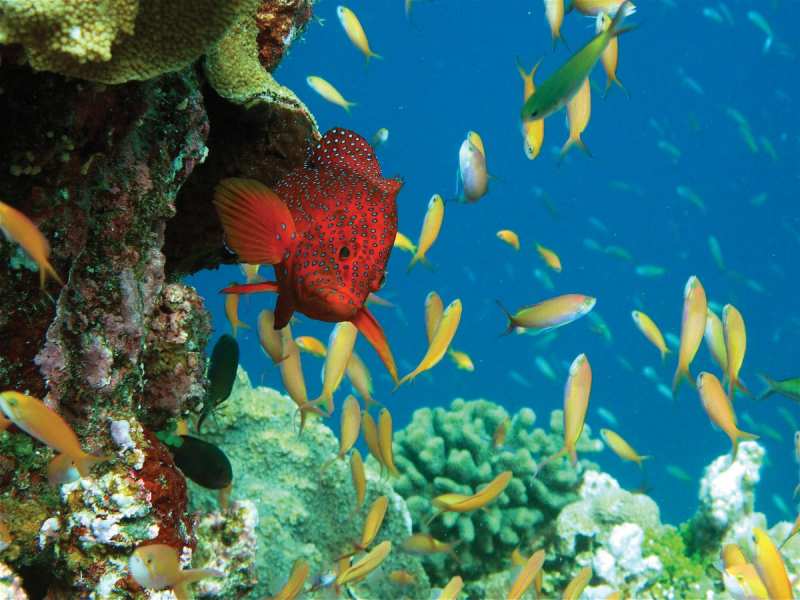
Source: adventure.travel -
This is a popular diving location in Balicasag and is well titled. Diver's Heaven is a wall dive at depths of up to 40 meters (131 feet). It's ideal for first-time divers since the currents are low and you can choose which depths to explore. It is home to a diversity of marine species that is mostly unbothered by divers, giving it a welcoming and relaxing setting. It's worth mentioning that Balicasag has opulent white beaches and resorts to visit while you're not diving. Diver's Heaven is surrounded by three additional dive sites: the Black Forest, the Balicasag Sanctuary, and the Royal Garden.
Things to see: Sea turtles, snappers, mackerel, and triggerfish are among the larger species that inhabit the location. It's always wonderful to find nudibranchs, fusiliers, and little tropical fish hiding among the brown daisy coral and other sponges around here.
When to go: The warm seas around Divers Heaven allow for diving all year, however, the months of January through May provide the best diving conditions. The typical water temperature is 28-29C/82-84F, with air temperatures ranging from 26-29C/79-84F.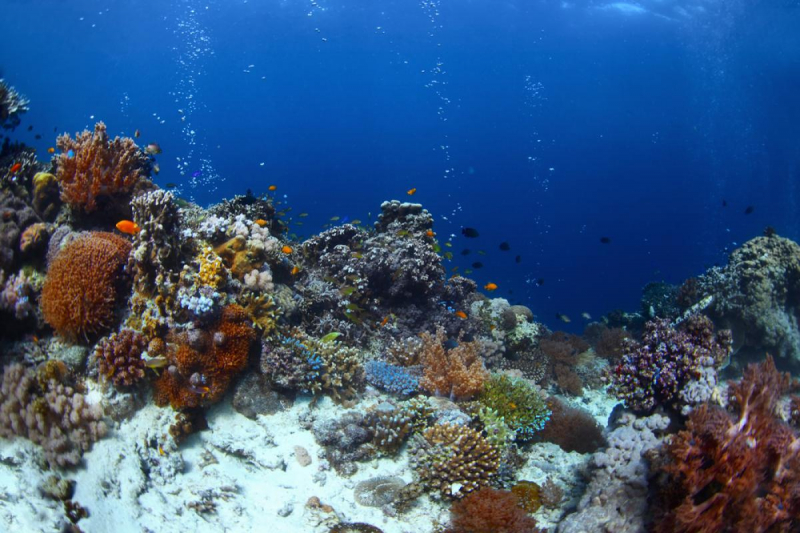
Source: divebooker.com 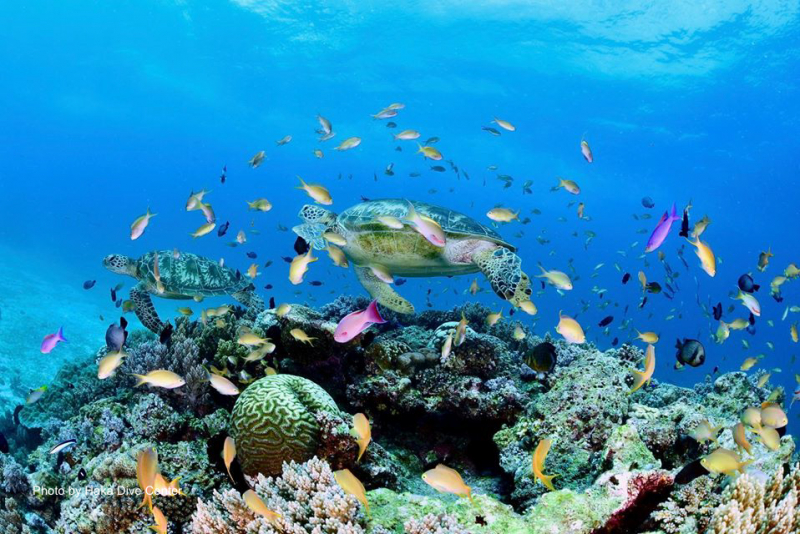
Source: guidetothephilippines.ph -
Yapak 1, another wall dive, is better suited for expert divers searching for a challenge. Its maximum depth is 70 meters (230 feet), and the currents here may reach two knots. You won't be sorry if you accept the challenge since Yapak 1 is widely regarded as the greatest diving location in Boracay. When you're not diving, there's a cool and diverse assortment of marine life to observe, and the region boasts white sand beaches to enjoy.
Things to see: Gray and white-tipped reef sharks, Napoleon wrasse, grouper, trevally, and dog-toothed tuna are also possible sightings. There are also tiny pygmy seahorses and gigantic mola molas. Keep your camera handy since there's plenty of macro life to be seen along the wall.
When to go: From February to March, the air temperature ranges between 25 and 32 degrees Celsius (77 and 90 degrees Fahrenheit), rising to 28 degrees Celsius (82 and 100 degrees Fahrenheit) from June to October. The usual water temperature is between 24 and 29 degrees Celsius/75 and 84 degrees Fahrenheit.
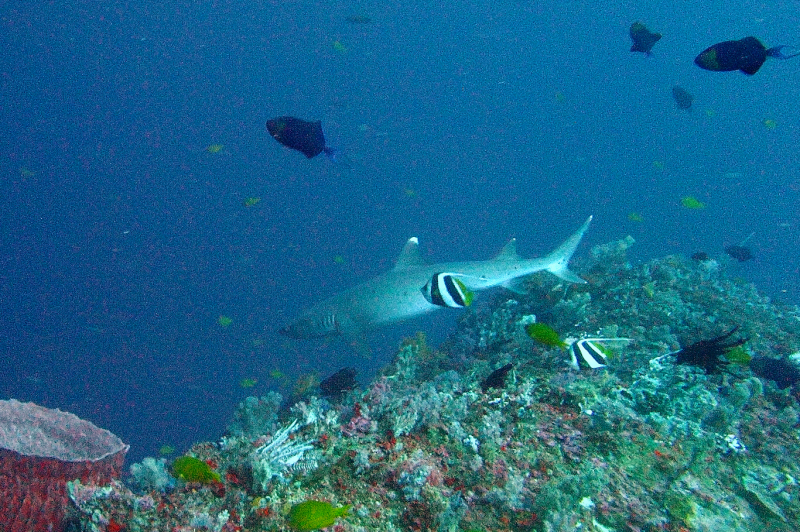
Source: boracayscuba.blogspot.com 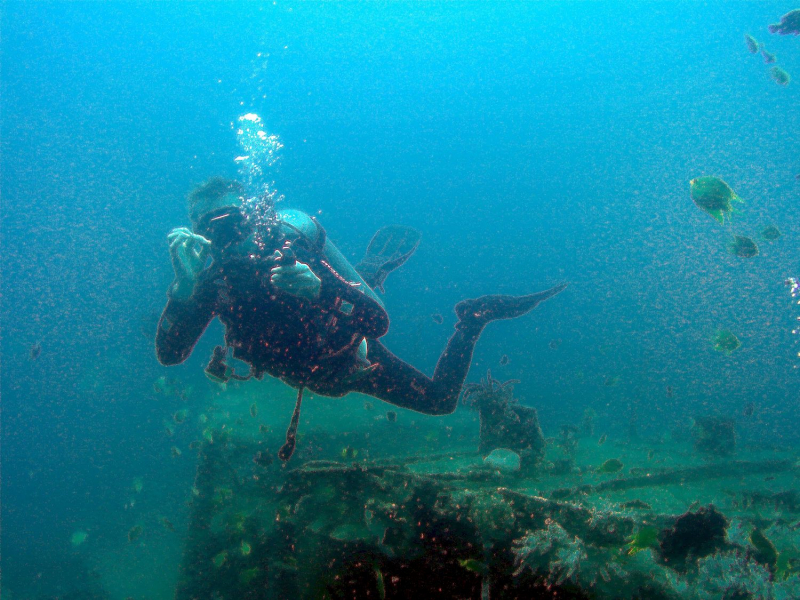
Source: pinterest.com











